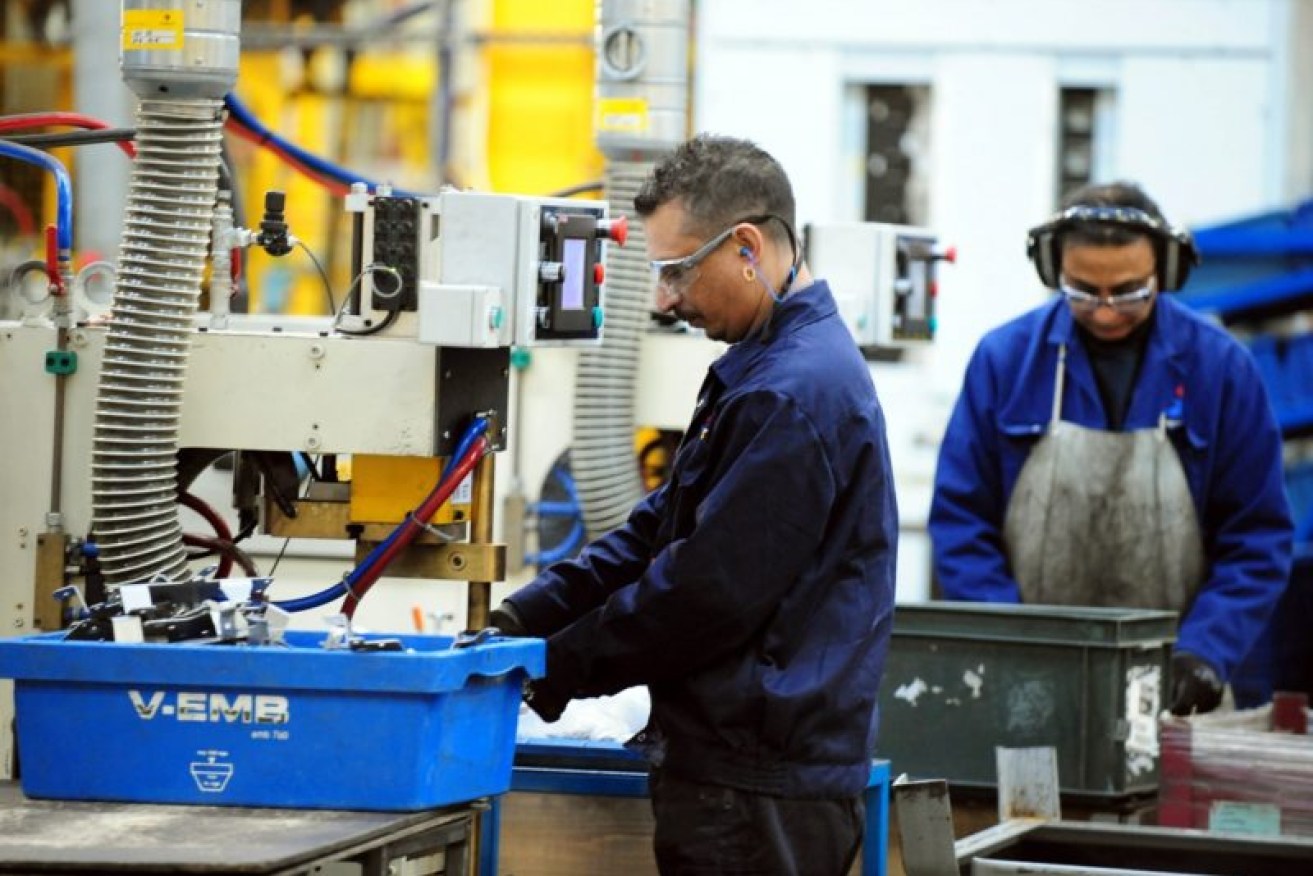Aussie workers ‘running to stand still’ as productivity falls


Economists warn productivity is too weak to generate better living standards for Australians. Photo: Getty
Australians struggling with stagnant living standards will endure worse conditions with the added risk of another interest rate hike unless a run of poor productivity turns around, economists warn.
The Productivity Commission (PC) declared on Tuesday that Australian workers are “running to stand still” after productivity fell 2 per cent over the June quarter.
PC acting chair Alex Robson said the economy has been working harder, not smarter.
“Negative productivity growth means that on average, Australians worked more hours just to produce and buy the same amount of goods and services,” he said.
And that carries both short- and long-term risks for Australian families, with the spectre of another interest rate hike still looming over struggling home owners, even amid an ongoing RBA pause.
Veteran economist Saul Eslake said that the Reserve Bank is worried higher wages growth will deliver inflation pressures unless productivity returns at least to its pre-pandemic growth rates.
Productivity has now fallen 3.2 per cent between 2021 and 2022-23, which is a far cry from the relatively benign average annual growth rate of around 1 per cent in the decade before COVID.
“[Productivity growth is] the risk to the common assumption that rates have peaked,” Eslake said.
Rate hikes hurt
The possibility of a rate hike is bad news for working families amid record high levels of mortgage stress that have resulted from the four percentage points of rate hikes since May 2022.
But poor productivity is also a much longer-term threat to living standards, which underpin the ability of Australians to cope with bill hikes while having enough money left over to enjoy life.
Productivity growth has been sluggish for more than a decade, averaging the lowest levels since the 1960s, which Eslake said has played a big part in a stagnation of living standards.
Material increases in living standards have been the slowest since the 1930s in recent years, he said, citing famous comments from Nobel Prize winning economist Paul Krugman back in the 1990s that while “productivity isn’t everything, in the long run it’s almost everything”.
“It’s a profound statement with a great deal of truth in it,” Eslake said.
“Economic history shows that productivity growth is really the only sustainable source of improvements in material living standards over long periods of time.”
The reason for that, as Indeed APAC economist Callam Pickering said, is because labour productivity measures how much Australia produces for each hour worked, meaning it relates strongly to how much income workers and businesses earn.
“We all have a limited number of hours in the day and the more productive we are the more we can potentially earn,” he said.
“Productivity growth is the reason why we earn a lot more today – even accounting for inflation – than our parents did at the same age.
“We don’t necessarily work more – or even harder – but we produce far more today than we did generations ago and that has made a huge difference to our standard of living.”

Source: PC (click to enlarge).
Productivity decline by industry
The PC’s quarterly bulletin found 15 of 19 Australian industries saw labour productivity decline over the three months to June, demonstrating how widespread the problem has become.
Arts and recreation saw the largest fall (-7.6 per cent), resulting from a 9.3 per cent increase in hours worked with output only increasing 0.9 per cent.
But the much larger issue was a productivity decline in massive industries such as mining; electricity, gas, water and waste services; and information media and telecommunications.
These industries drove almost half the overall decline in labour productivity, the PC said, with mining alone accounting for just over a third of the fall as hours worked rose while output fell.
Australia’s productivity malaise has many causes and shares similarities with other developed economies in Europe and North America over the past few decades.
Popular theories have previously suggested that part of the problem is demographic, and that ageing populations in Australia and elsewhere have weighed in productivity growth.
Eslake said there is also a “good deal of evidence” a decline in what’s called “dynamism” – in other words how much the composition of the economy changes over time – is a key problem.
He said that low interest rates between 2010 and 2022 may have allowed businesses that were not very productive to persist in the market without going broke, which would have pushed the capital and labour tied up in those enterprises towards more productive uses.
There has also been less competition between companies that dominate technology fields, and that can slow down the distribution of productive innovations across the economy.
When it comes to lifting productivity growth, solutions can be challenging and many of the reforms which delivered such gains in the 1980-90s – namely the deregulation of global trade and local labour markets – cannot be repeated.
In the short-term, however, some upwards pressure on productivity is anticipated, with the PC saying conditions in industries like mining will improve somewhat.
Pickering said that the recent bout of low productivity is heavily concentrated in industries like mining, at least partly because of COVID impacts, which should “unwind over time”.
“Nevertheless, federal and state governments should make productivity growth a central consideration in the formation of any economic policy,” he said.
“Australia’s productivity performance has been poor over the past decade and that’s ultimately to the detriment of Australian households, businesses and the nation itself.”








